In the Studio: Claude VonStroke
It only takes a quick glance at Claude VonStroke‘s studio to realize that the man […]
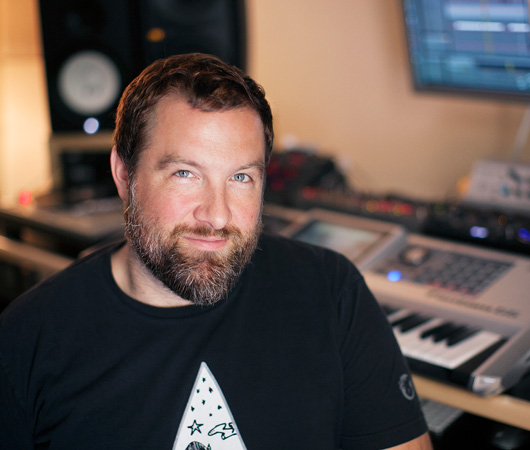
It only takes a quick glance at Claude VonStroke‘s studio to realize that the man loves turning knobs. No matter which way one looks, there’s a neon glow emanating from his various FX units, synths, samplers, keyboards, and the like, all of which are situated within arms reach. In truth, this is the result of a shift by the Dirtybird label head towards a more hands-on workflow, leading him to cover his desk with various pieces of hardware and fill his racks with choice signal processors in an effort to do more creation outside of a purely computer-based realm. Recently, we followed the normally San Francisco-based producer down to his new room in Los Angeles, both to get a look at his current set-up and to find out how his approach and the tools at his disposal have evolved over the years.
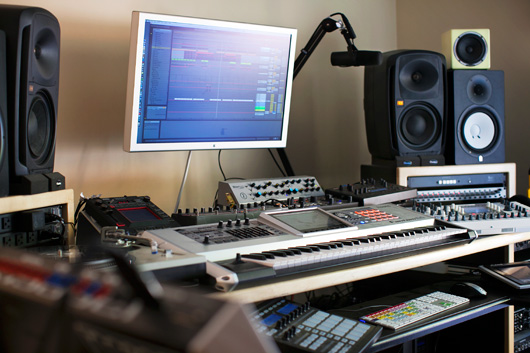
XLR8R: How long have you had this studio in LA? Did you head down here for any particular project?
Claude Von Stroke: This is actually a brand-new room. I moved all of my stuff down here to try it out, to see what I can get into [in a place] where, basically, the entire music business is [located].
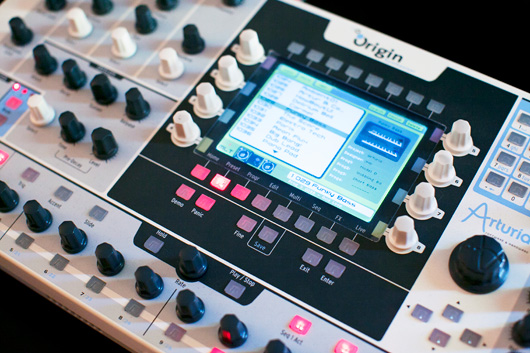
When you say brand new, do you mean just a few months?
Not even a few months. I pretty much finished setting this up a few days before XLR8R called. It was set up before, but it was really raw—just the Maschine and my computer. Then I started building it back up from all the pieces that I had.
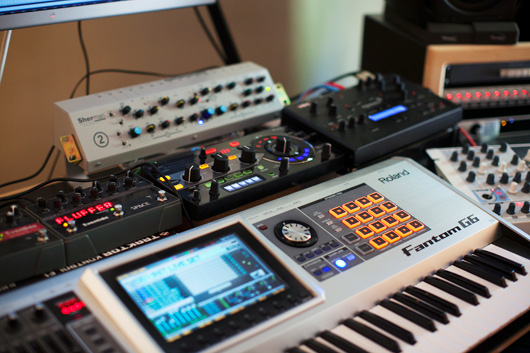
How long did it take you to end up with this configuration? It looks like there are a lot of newer digital pieces lying around.
There’s a lot of analog stuff too, but it’s all in the racks. There is a good amount of digital stuff, but I always try to dirty that up with what’s in the rack. The way that I got to this point was that before, I had done everything in the box with Reason, but then it just started to feel like I wasn’t playing music anymore [laughs], so I added some keyboards and my Moog, and set up this whole rig. The whole rig is connected by a semi-modular patch bay in the rack (called the Dangerous Liaison), that makes it so I can route anything I’m playing or recording through any of the effects that are on the desk, just by hitting a button and switching them. It took about 10 million years of wiring, but I can send any signal to the analog compressor, the preamp, the Kaoss pad, or whatever with the touch of a button. I can also now—which I could never figure out how to do before—route signal out of my computer and then back in after running it through all of the outboard gear; this system allows me to do that. Basically, I’m just trying to take the awesome elements of outboard gear and put it all back into the box again, as well as add in some live playing.
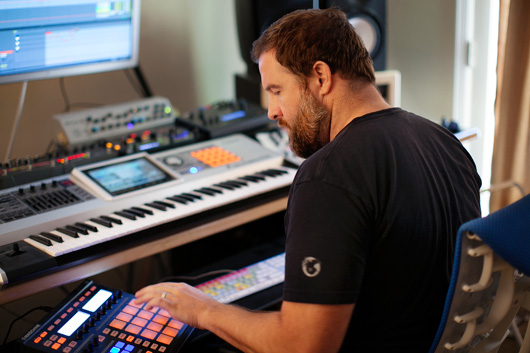
[Before I built this set-up,] my buddy Tanner Ross [told] me, “I’m just showing up to the studio and I’m actually hammering the beats with my hands and recording it and then playing the synths, and I can get a groove going in 10 minutes.” For me, it was taking something like five hours to get a groove going because I would be sitting there typing it in with a mouse. So now, I’m all about throwing on Maschine’s step-sequencer and just rocking in a beat. Then, I’ll just play some stuff and see how it goes. It’s way more fun.
And then you chop up what you had recorded?
Yeah, the fun only lasts so long. Eventually, I’ll get something going that’s decent and then I put it into Ableton and arrange and chop and do all the stuff that sucks. [laughs] That’s become my new way of working. It ends up being very technical at the end because of all the little things I like to do, all the little details. But if the whole thing is technical, it can be draining. There has to be some fun, like playing a keyboard through some live echoes and stuff. And really, it’s not the same when you have a MIDI keyboard triggering some VST synth. Working this way really commits you to the sound—you can’t change it once it’s in there.
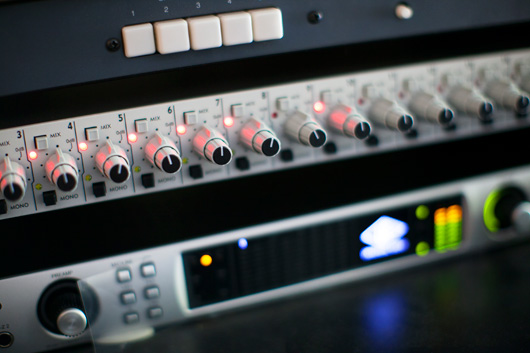
When you’re routing stuff out from the computer, are you recording that back in once you have the sounds you want or are you recalling effects?
I’m definitely recording it back in. If I have this beat that is sounding too clean cut, I’ll run some of it out to give it a little grunge or some tube feeling and then record that in. You could probably do this all on plug-ins, but this way is just more fun. Sometimes, I’ll just sit there for half an hour with a loop running and mess around with all the stuff that’s on the desk and tweak it, and then maybe I’ll use just four seconds of audio from that whole half hour—but it’ll be an awesome four seconds. [laughs] Happy accidents.
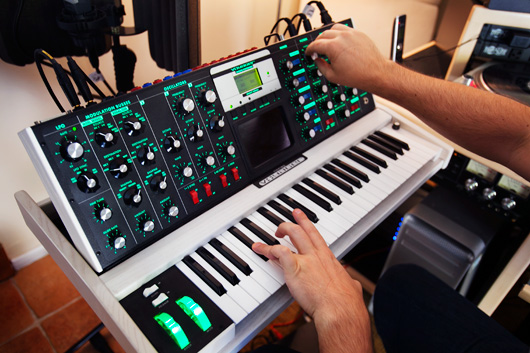
How did you end up with the Moog Voyager?
I just wanted one so bad forever. I’ve used it on almost everything I do since about 2010. It’s not always the featured thing [in a track], but it gets used—I go to it for something, always. I have this weird justification for buying gear, which is if I use a piece of gear in a track, and the track does well, then it paid for itself and I can keep it. I literally do sell everything that doesn’t end up in a track. I just get rid of it!
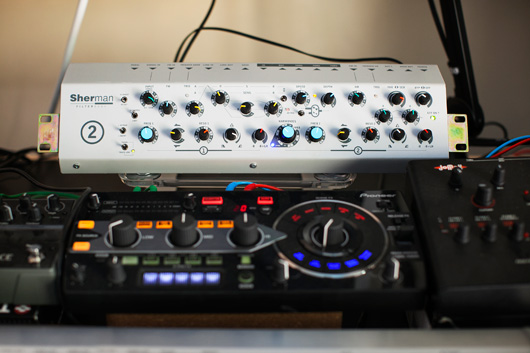
So then, which song made it so the Sherman Filterbank could stay in the rig?
Ah, the Sherman Filterbank is in my very first album’s opening track; “Warming Up the Bass Machines” is just an 808 getting totally mangled through that filter bank. And then I did all this drum & bass stuff that no one ever heard that had all been gnarled out by it too. That was actually my Sherman Filterbank 1, and I just got the Sherman Filterbank 2 about six months ago. That is not on a track yet, so it has to get in the mix soon or it’s out of here.
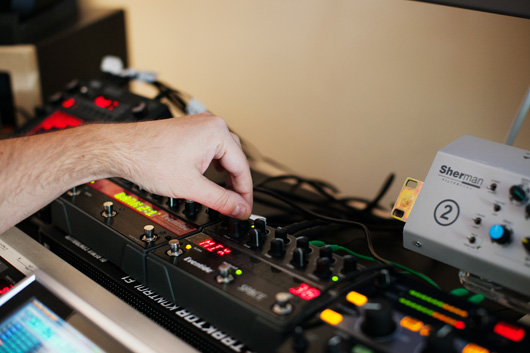
Do you feel pretty confident that it will make the cut?
Yes. It’s a really aggressive-sounding filter, and it is one of the only things on my desk where I can say—for sure—that you could not make the same sounds in the digital world. It’s a little too messed up and raw.
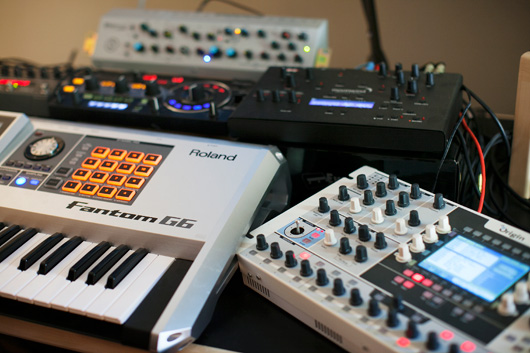
You have three sets of speakers for your monitoring set-up. What do you check on each of them?
I use the Event [Opals] on everything. Those are the nice, expensive ones and they sound great. The Yamaha [HS80Ms] are actually really good, and pretty cheap, about $200 each. If you are just starting out and need to buy a pair of speakers, I think those are a good first pair. For me, they serve as a really nice “B” check, especially in this room because they are a lot hotter on the treble. On the very top are the [Avantone] Mixcubes, [and I use those] to see if any of my bass is going to register on someone’s speakers in their 1992 Honda Civic. Literally, they are just speakers to see if your mix is going to sound good in every situation. It’s really cool to listen to them though, because if your mix sounds good on those, you’re really looking good.
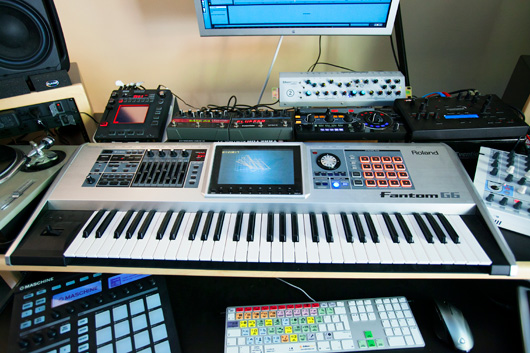
Even though you’re making music for clubs, you still make sure it will sound good on a variety of systems?
Yeah, definitely, because you know that people are just going to put it on their iPod or laptop and they’re just not going to get that same earth-shattering bass experience that they might get at the club. And it’s actually true that a lot clubs have really shitty sound. It’s not like everybody is going to Fabric every weekend. Sometimes it’s just a guy DJing at a bar with pair of Mackie monitors.
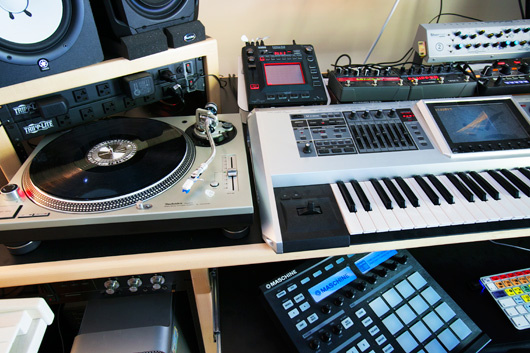
You have a turntable on the desk too, is that there for sampling?
It’s just there to help me get good ideas from all my old drum & bass and hip-hop records. I don’t do a lot of sampling, but I will sometimes sample a drum sound or a bass patch. I don’t take loops. Loops are awesome if you’re an old-school hip-hop producer, but for me, it just wrecks the chances of a song being able to do anything because you have to go clear a bunch of samples—it limits the flight pattern of the song in the world.
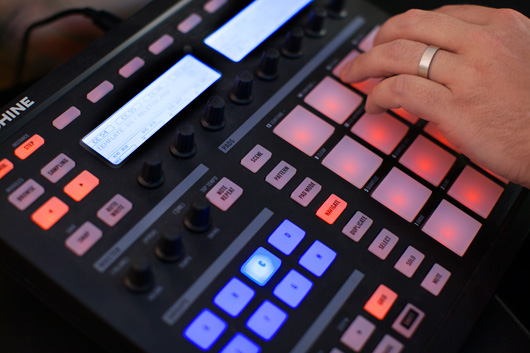
On a good, productive day how much work are you getting done? Are you always building in steps or is there ever a day when you bang out a track in one sitting?
No way! There is never a day when I can make an entire track and it’s [completely] done. That’s never happened. [laughs]
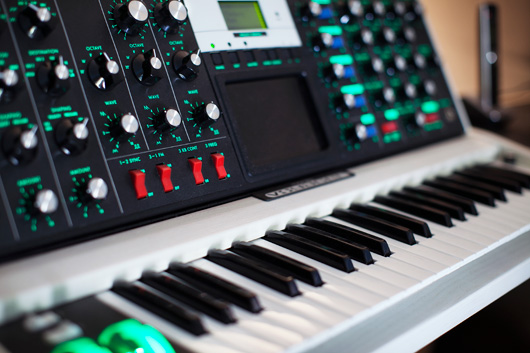
And you do all your own mixing as well?
Yeah. I would love to not be doing that though, because that’s the part that kills me. The mixdown is actually taking more days than the creation of the song. Because [technology enables you to do] everything now, you do everything. It’s three different jobs actually—making the song, mixing the song, and then mastering the song—and you can’t be amazing at all three of those jobs unless you’re an absolute genius. It sucks that everybody is doing all three of those jobs now. In the best-case scenario, you would just be creative 100% of the time, and the first part is where you’d put all of your energy. Then you’d go to a studio with a guy or girl you trust and they’d do the mixdown with you, but you wouldn’t be spending tons of brainpower on it. Then you’d send it off to your mastering person, which is something I actually do. That’s part of the downside to the fact that we can do everything now—everybody is kind of medium-good at everything instead of being really good at just one of those jobs.

